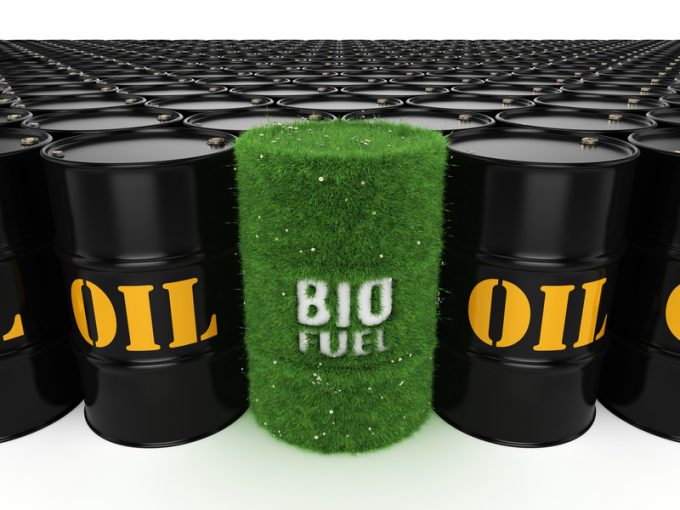Brussels-based green lobby group Transport & Environment has hit out at the use of biofuels in transport, saying it is environmentally worse than fossil fuels, while needlessly increasing costs for end users.
Following the release of a T&E report earlier this week which appears to suggest a transition to biodiesel, amongst other next-generation fuels like e-methanol and e-ammonia, would be both affordable and sustainable, the group followed up with a surprise condemnation, noting that the cost spread is spiralling. “For EU-produced bioethanol there was a premium of over 100%,” the report read.
Meanwhile imported bioethanol, which is made from virgin crops in the Americas, was available at a premium of just 45%, providing perverse incentives for European buyers.
T&E senior campaign manager biofuels & energy Maik Marahrens toldWPO: “At the moment, biodiesel comes with greater carbon emissions than fossil fuels, because of the associated deforestation.
“Ethanol is different – so far we haven’t seen deforestation, but we did see [Brazil’s president] Bolsonaro lifting the ban on sugar cane expansion into the Amazon, so there is a risk there in Brazil.
“But the main problem is it is based on food crops: in Europe, sugar beet, in South America, sugar cane, in North America it’s corn. 44% of the corn harvest in the US goes into ethanol.
Mr Marahrens said that biofuel demand provides a perverse incentive, which ultimately leads to greater use of the extremely damaging virgin palm oil. “Category 1 and 2 [residuals] are not fit for human consumption or for animal feed. But what we are now seeing is because it is so profitable, category 3, which is fit for animal consumption, is being used for biofuel.
“So it is counter-intuitive and perverse, but yes, at the moment using fossil diesel creates less emissions than using biofuels.”
T&E’s report clarified that used cooking oil, which is widely touted as liquid biofuels’ main feedstock, “does not come with these negative consequences,” but, it asserts, “is very limited in supply. Europe is already importing more than half of its UCO consumption for biodiesel.”
But the claim contrasts sharply with the testimony of Isabel Welten, who was unequivocal in an interview withWPOthis week that abundant residual feedstocks are available.
“A more mature biofuel market will have much more positive influence [on cost]. Of course, you have to make sure you’re still working with the right sustainable feedstocks, but in order to unlock more sustainable feedstocks, you have to have an increase in demand first, otherwise there is no business case for… slightly more complex, harder feedstocks to work with.
“But if you look at the energy coming from biomass, and the energy demands of transport, then it matches easily,” Ms Welten said. “We just need to make sure we find the right ways to get these sustainable feedstocks.”
Having enough left over for animal feed may not be the full extent of the problem. AnEconomistarticle this month highlighted that the Russo-Ukraine war threatens food supplies for 47m people. The article pits human food primarily against animal feed, but also against biofuel and other industrial uses, suggesting that a greater portion of maize, rice and wheat should be allocated to feeding the hungry.
“According to our calculations, if the world’s pig population were a stand-alone country, it would rank at the very top of grain-consumption league tables, chomping through as much grain as 2bn people,” the article read. “In the long run, the only way to avoid such trade-offs is to get energy from other sources—ideally using renewables.”
This was also the solution proposed by Mr Marahrens, who toldWPO: “Various studies show it is much more efficient to produce energy for road transport using solar panels – you only need 1-3% of the area to produce the same amount of energy.”
Responding to the T&E assertions yesterday, Ms Welten clarified that her company does not use biofuel products which “cannot be used for food and feed”, and operates according to International Sustainability & Carbon Certification (ISCC) standards. “These feedstocks can include sawdust, crude tall oil (a by-product of wood pulp manufacturing), tallow, sewage sludge and used cooking oils… we are working on digital and physical supply chain tracing projects.”
Ms Welten pointed to research demonstrating an abundance of feedstock for biofuel, including one study which suggests potential biofuel feedstock in the EU alone will be over up to 127.5Mtoe available by 2030, and up to 252Mtoe by 2050. This is enough to cover more than five times shipping’s energy demand as of 2017, and more than half that of the entire transport sector, which was 430Mtoe.
On imports, Ms Welten argued: “It is normal that the EU imports such raw materials, because the continent is a hot spot for biofuel industry development and market uptake. This landscape might change in the future, as other markets arise as hotspots, for instance India.
“It is also important to note that the economies of scale enabled by these imports support the development of marginal markets. Therefore, it is not necessarily bad that the EU has been importing such raw materials.We believe that advanced biofuels will be a part of the overall marine energy mix for decades to come, alongside other solutions.”






